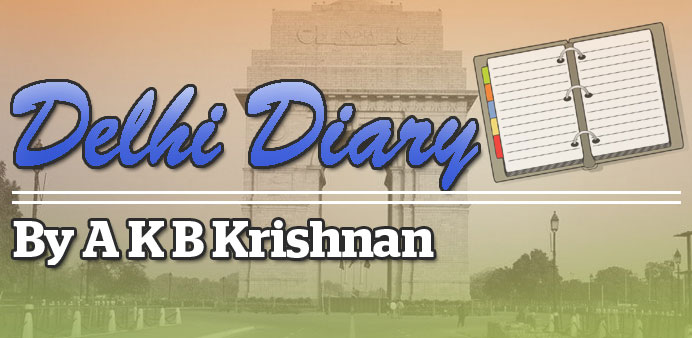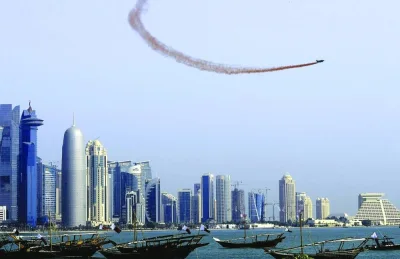By A K B Krishnan
The national elections are not really round the corner, but the idea of a Third Front is already floating in the air. Along with the steadily sliding images of the Congress and the BJP, a mere wobbling of the incumbent government is enough to trigger such a recurrent mid-summer dream of cobbling together that familiar refuge of losers at the national level. But will it not be yet another intermittent attempt to bring the members of the motley group together before they disperse in disappointment is the question on the public mind now.
The timing, however, is telling, given that national politics is delicately placed with expectation of the assembly poll results in several states stirring the pot. Also, the beleaguered UPA-II has been facing crisis after crisis in its final lap with the baggage of a wasted first half and a series of scams. The principal opposition party too has so far proved incapable of seriously taking on the UPA, due to its own blemish of corruption and intense internal tussles over leadership issue. Such a scenario can be a fertile ground for Third Front designs.
The Third Front tasted power twice at the Centre, first during 1989-90 and then in 1996. But it has never been able to provide any worthwhile alternative except for fleeting moments of glory. Yet those experiments make smaller parties hope for such a combine again. Normally, it is the Left that espouses this alternative but this time, it is Samajwadi Party chief Mulayam Singh Yadav who has taken the lead. But his idea of the front while breathing fire against the Congress and ruling out withdrawing his party’s support to the UPA government keeps everyone guessing about his real intention.
The prime minister conceded that the feeling of a stability deficit was inherent in a coalition arrangement, but he himself had little doubt that his government would last its full term. The secret of the UPA’s longevity lies almost entirely in the contradictions inherent to coalitional politics. If it has survived all these years in office despite multiple crises and challenges, it is not due to the dispensation’s intrinsic strength. Its alliance partners have walked out and issued threats without being able to significantly alter the basic arithmetic required to keep the government in power.
When Mamata Banerjee’s Trinamool Congress (TMC) pulled out of the alliance in September 2012, citing differences over allowing Foreign Direct Investment in multi-brand retail, the government was readily propped up by the SP and its arch rival in Uttar Pradesh, the Bahujan Samaj Party, both supporting from outside. Mamata could not even muster the support of 50 MPs required to move a no-confidence motion. The duo’s support is even more crucial now after the recent exit of the DMK, the biggest UPA constituent, over the issue of Sri Lanka Tamils.
Yet Yadav, keeping true to his style of flip-flops, insisted recently that the next general elections would happen this year itself - may be in November - and a spontaneously formed Third Front government would come to power. So the government, hanging by a thread, continues its efforts to keep its biggest ally in good humour. Its latest act in boosting his ego was Finance Minister P Chidambaram’s dash to Lucknow to promise his son Akhilesh Yadav, who is the state’s chief minister, all help for the state’s development.
The Yadav chieftain must be having a bigger political game in mind, but he is under pressure as his sworn enemy BSP chief Mayawati had already pronounced her stance that she would support the UPA to keep the communal forces at bay. So, withdrawing support now may pitch Mulayam in a secular versus communal tussle. To his dismay, the BJP is unwilling to attempt a topple game in parliament despite the UPA’s obvious lack of numbers in the house.
A canny politician from the Hindi heartland, Yadav knows very well that even if he wanted to, he can’t pull down the government. The game of numbers is such that if one party walks out of the UPA, another is waiting in the wings to walk in and make up the shortfall. So, when the 19-member DMK-VCK combine pulled out, Mamata Banerjee with an equal number of MPs offered a helping hand. If Mulayam’s 22 MPs were to pull the plug, Nitish Kumar’s 20 JD-U MPs could step in now that the government seems willing to grant Bihar special status and a commensurate financial package.
In a diverse nation with a fractured electorate, the question therefore is not who wields real power. It is who wields power as best and nimbly as possible taking advantage of coalition odds. Any government dependent on arithmetical balancing act must sometimes call the bluff of its baiters to avoid policy paralysis, as UPA-II has done a couple of times. This is what sustains the prime minister’s confidence that his government would survive even Mulayam’s desertion.
The inner contradictions within regional political players cannot be discounted. Egos and turf war currently prevent them from coming together. For instance, Mamata Banerjee cannot join hands with anyone who stands beside the Left. Similarly, the SP-BSP and the AIADMK-DMK inner conflicts cannot just be erased. This is one of the primary reasons why regional parties have so far maintained a studied silence towards Mulayam’s idea.
It is in this context that a clear signal from the Congress that it is ready to work with the Left ahead of the Lok Sabha elections in all states except West Bengal, Kerala and Tripura assumes importance. Coming from Defence Minister A K Antony, a key strategist heading the AICC sub-group on pre-poll pacts, the idea of a pre-poll “understanding” between the Congress and Left to defeat the NDA may end all the speculation about a Third Front. This may also compel anti-Congress parties outside the NDA like the BJD, Telugu Desam, INLD and a faction of Dravadian parties to rework poll strategies, including pre-poll alliances.
Mulayam’s yearning for a Third Front, however, has little to do with a desire for a government that offers a third alternative with the objective of providing good leadership and pro-people policies. It has more to do with flexing his suddenly-discovered muscles and opportunity for an assertion of his leadership. But most of the players in the motley group are not willing to accept a second place. His dangling of the carrot of support to the UPA can also be seen as a ploy aimed at extracting whatever legal concessions he can to save him and his family from multiple prosecutions.



